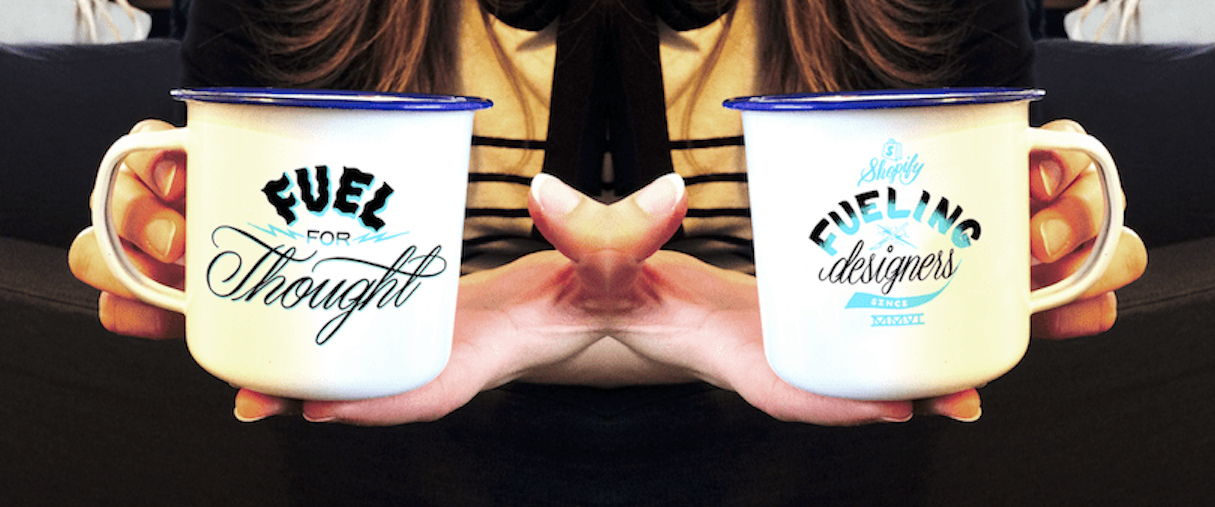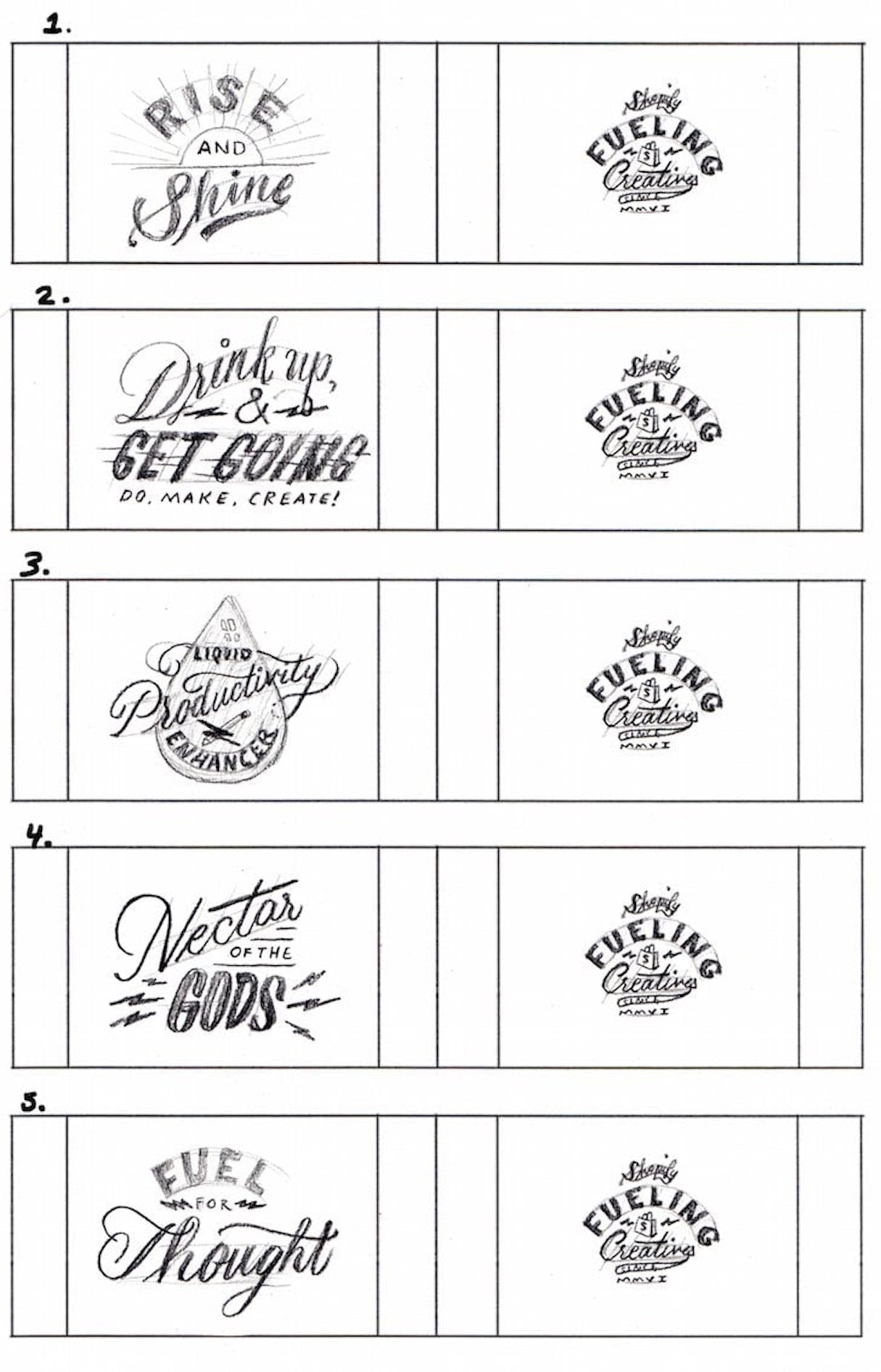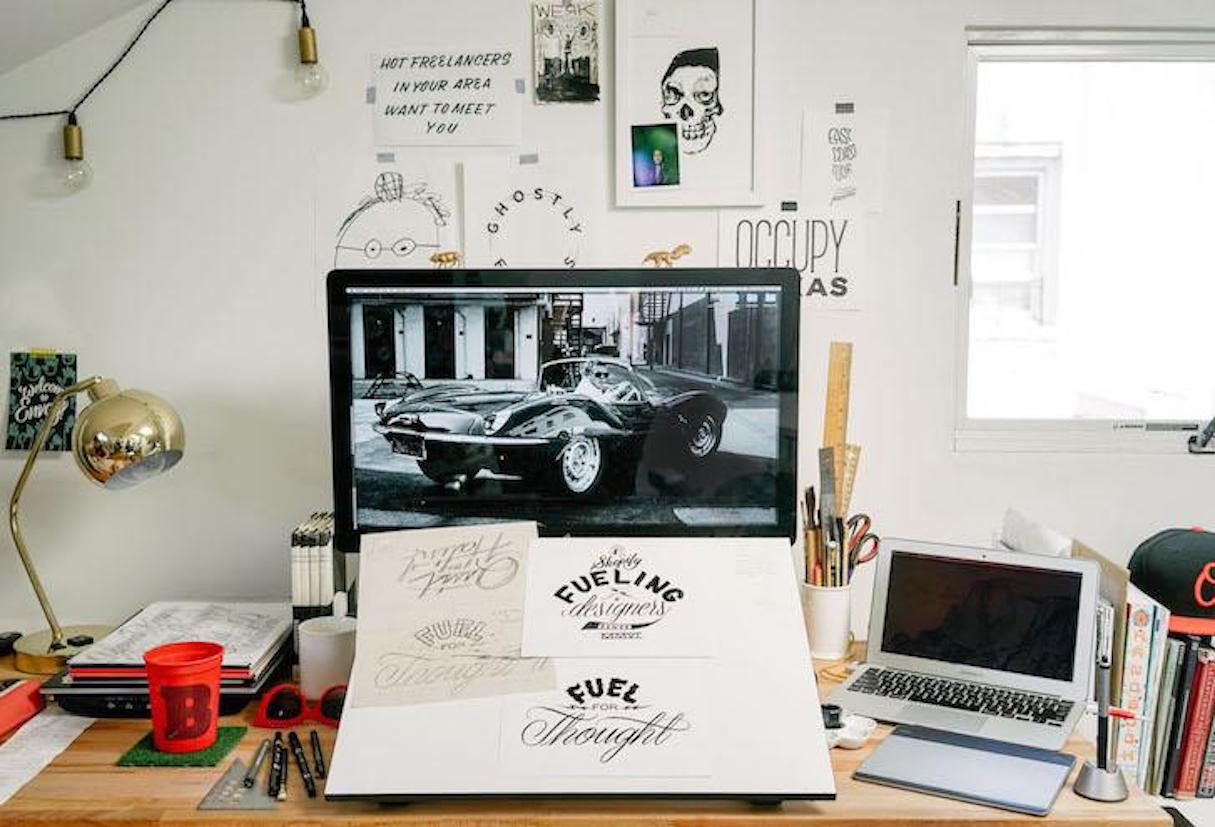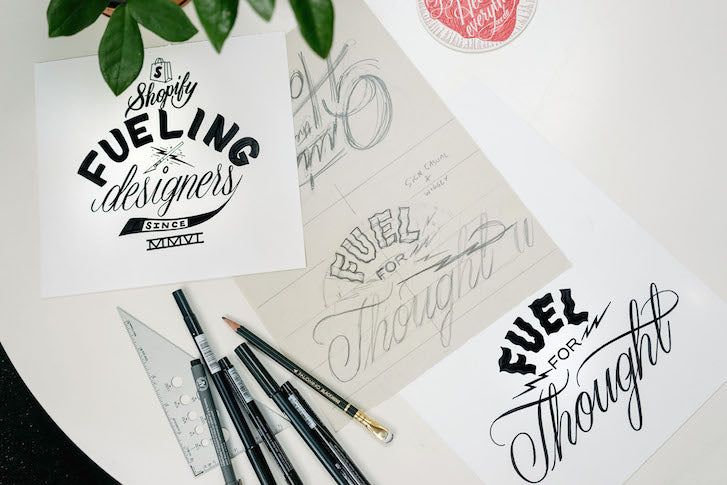 A self-described "jack of all trades," Jen Mussari is a lettering artist, illustrator, fine artist, designer, and sign painter. She has worked on design projects for Airbnb, Kickstarter, Patagonia, the Art Director's Club, Target, Penguin Books, and Adobe. Earlier this year, we reached out to Jen to ask for her help creating a fresh and fun design for our camping mugs. Here are the ins and outs of her creative process.
A self-described "jack of all trades," Jen Mussari is a lettering artist, illustrator, fine artist, designer, and sign painter. She has worked on design projects for Airbnb, Kickstarter, Patagonia, the Art Director's Club, Target, Penguin Books, and Adobe. Earlier this year, we reached out to Jen to ask for her help creating a fresh and fun design for our camping mugs. Here are the ins and outs of her creative process.
Learn more about Shopify theme development with Shopify metafields.
Where did the idea for the mug design come from?
Shopify approached me about creating a really unique object to hand out at events geared towards designers. In looking for an object that people would really use and love, we settled on the idea of an enamel mug with a printed hand-lettering design. I wanted to play with the context of the cup being used for drinking coffee or tea, instead of just slapping a design that I thought was “cool” on it and calling it a day. Coffee plays a role in my own creative process (gosh, I love coffee so much) and so I came up with a few phrases that would toy with the idea of caffeine as a jump-starter for the creative process. “Fuel for Thought” was the obvious hit!

You might also like: For Designers, By Designers: InVision's Marketplace Launches On Shopify
What was your process for designing the mug?
I use a traditional illustration process, which means that I present my client (Shopify) with a set of sketches and then we discuss and elaborate on the concept from there. This process allows for collaboration between myself and my clients, which always makes for the best work. Once we had a good idea of how this should look, I set to work in drawing the final. I draw everything by hand with very minor digital edits, so the drawing has a real personal feel.
How did the fact that was a mug influence the design?
I know how much designers love coffee and tea, so I really wanted to pull inspiration from the idea of “liquid creativity.” When creating designed objects, it’s extremely important to consider the contexts in which these objects will live and be used. This mug should be a vessel for whatever beverage gets one’s ideas flowing, whether it’s a morning coffee, water throughout the day, or even an end-of-day cocktail.
When creating designed objects, it’s extremely important to consider the contexts in which these objects will live and be used.
Can you share a few iterations from along the way?
The first round of sketches had a few different options that I was confident in, and I would have been very happy with bringing any of these designs to final. Based on feedback, we went ahead with “Fuel for Thought” because that phrase best described the idea of the mug being a vessel for creativity. My first sketches are always very small and rough; in reality each sketch is no bigger than an inch or two. I always think of the concepts first and how the words look second.

Where did you do most of the design work for this project?
I’m lucky to spend my workdays in my Gowanus attic studio, which I share with my freelancer family, Ghostly Ferns. We occupy the sunlit attic, which sits atop four more floors of creative people and friends. Throughout the Townhouse, there are about 25 wonderful people total sharing, working, and hanging out together.
As well as Ghostly Ferns, there are other independent freelancers who work as developers, writers, designers, etc.; some remote workers who have full-time jobs employed by larger companies; and small company teams. Being surrounded by positive, supportive people is very important to me and I feel endlessly lucky to be a part of my community.

Where do you find inspiration to keep your work fresh?
Inspiration is a tricky beast right now, because the internet just inundates us with content all the time. I find my most valuable inspiration when out in the real world; I love seeing hand-painted signs in my neighborhood for businesses that have been around for decades. Instead of hunting down visual inspiration, I try to put myself into a mindset that is open to outside influence. So when I'm out walking, for instance, I am on alert looking for things that would get me thinking or adjust my mood. I get so much energy from talking to my neighbours on my way to work, for instance, or observing my environment. Turning on my brain to be present and considerate is more important to me than what, specifically, I am looking at.
How much time do you dedicate each day to improve your skills/craft?
Admittedly, I am not a routine person. I function terribly if I need to be anywhere before noon. So I have embraced this lately, and try really hard to make sure that I am taking the most advantage of my life by not restricting my work to any sort of schedule. Drawing is the best way to spend the night, and I am a natural night owl, so I will stay up as late as I can every night, even weekends, working. If I am trying out a new technique and really get into a groove, I might be up all hours of the night. I wouldn’t say that I necessarily dedicate a certain amount of time to practice, but rather entire blocks of the day.
You might also like: 12 Budget-Friendly Christmas Gift Ideas for Web Designers
How do you get your creativity flowing?
If ever I need to kickstart my brain, I’ll try to get back into critical thinking mode by reading. I might read opinion pieces by art critics, or more theoretic writing by authors like Bruno Munari, John Berger, and Marshall Mcluhan.
If that doesn’t work, then I get visual and start to go back to old master drawings to study basics by those who do it best: incredible draftspeople like Kathe Kollwitz, Edward Hopper, and Euan Uglow. And if that doesn’t work, then it’s time to go for a walk!
Where does your passion for drawing words come from?
My dad had this totally radical record collection, mostly made up of 70s mustachio-ed dudes and eclectic 80s groups with some proper 60s guitar legends thrown in for good measure. I remember staring at these record albums as a kid and just being totally enraptured with the artwork. The way that album covers join typography, lettering, and artwork together will always have a massive influence on me. I was the kid in school who would draw punk logos on everyone’s binders, but I just never stopped drawing. Even when I went home from school, and even when other kids grew out of it. I’m really grateful to have mentors along the way who recognized this weird passion, and pushed me in the right direction. When I was a kid staring at record covers, it never occurred to me that I could have a job making them.
I was the kid in school who would draw punk logos on everyone’s binders.
How do you get your final artwork to keep the lively spirit of the initial sketch?
My sketches and final art pieces are very similar, and I try to maintain the energy and spirit of a good concept so that it doesn’t become over-designed. This means that the idea needs to be good enough to really stand on its own; it has to “work” right from the beginning. I’m not someone who likes to meander and explore an idea from a hundred different ways; I want to discover the best way to solve a problem visually and start there. Then I can really get down to sculpting a final that has all of the energy and ideas of an initial sketch, but with the refinement required to call it really “done.”

Do you consider any of your projects to be a failure? If so, which one(s) and why?
I’m forever an optimist and a reformed over-achiever, so the word “failure” is one that I save for legitimate and actual failure. If a project gets cut or a client has incorrect expectations, I don’t consider that a failure at all but rather a minor hiccup that is out of my control. Any time spent marinating over “what could have been” or “what went wrong” is time wasted, in my opinion, and there’s nothing I hate more than wasted time.
Instead, I prefer to have clear answers to questions like “what went wrong,” and use that to do better in the future. To me, I would only ever use the word “failure” to talk about my own work if something actually went horribly wrong and I would not be able to continue working for some reason (like if I accidentally cut off my drawing hand). So no, I don’t consider any of my projects to be a failure, even the most annoying/boring/bummer ones.
Where do you see your work taking you?
This year has been a great year in my freelance practice, and I am forever grateful for the opportunity to work with brands like Shopify on fun, unique projects like this! I am constantly learning and exploring, and I cannot wait to see what the near future holds.
Where do you do the work that "fuels" you? Let us know in the comments below!
Read more
- Why We’re Sending a Shopify Developer Around the World (And How You Can Connect With Her)
- 9 Noteworthy Coworking Spaces in NYC
- Jeffrey Zeldman Shares His Advice for Aspiring Freelance Web Designers
- How to Give Good Creative Feedback
- What is Impostor Syndrome? 6 Ways for Designers and Developers to Overcome it
- Why Freelancers Need to Care About Bookkeeping

